In the famous post-Civil War initiative known as “40 acres and a mule,” Union General William T. Sherman promised newly freed Black households the one thing most necessary for sustaining their freedom: land. As Black minister Garrison Frazier told Sherman, freedom means having the ability to “reap the fruit of our own labor.” Unfortunately, Sherman’s promise never came to fruition, as President Andrew Johnson overturned the decision. Over a century and a half later, the unfulfilled promise of land ownership remains just as essential for the descendants of survivors of American slavery who desire economic power for themselves and their communities.
The Baldwin Hills-Crenshaw Plaza Mall, a shopping mall at the intersection of Crenshaw Blvd. and Martin Luther King, Jr. Blvd. in Los Angeles, happens to sit on 40 acres of Crenshaw, a Black-majority area. The Black community there is currently fighting outside investors who are attempting to buy the mall. Those investors include international conglomerates with reported business ties to both Vladimir Putin and Donald Trump and a history of violating tenants’ rights. The local community knows that the loss of this key economic asset would undermine Black economic power and open the door to gentrification and displacement.
It is not surprising that powerful real estate moguls are once again blocking the creation of Black wealth. As Brookings wrote earlier this year, “the real estate industry has been complicit in white supremacy and racial discrimination” for generations.
Fortunately, the Crenshaw community has rallied together. Community organizers formed the nonprofit Downtown Crenshaw, which has raised almost $60 million dollars toward buying the mall (the highest bid) with the ability to finance the rest if the contract is awarded. Together with some 300 other organizations—including unions, homeowner associations, and business organizations—Downtown Crenshaw is striving to ensure that an important community asset continues to benefit the community. But the odds are stacked against them and time is running out—organizers have until Friday, July 30 to stop the sale and “buy back the block.”
To reimagine the mall as a Black-owned community asset, activists have turned to the power of community ownership, a model first pioneered by Black people in Georgia during the civil rights era. The community ownership model allows communities to build wealth while protecting them from the three destructive “D’s” outlined below that undermine Black neighborhoods.
Devaluation, disinvestment, and displacement: How Black communities are destroyed
Black commercial corridors and neighborhoods often fall victim to a three-step process of exploitation. First, Black places are denied opportunity to build wealth through the systemic devaluation of their existing assets, including residential property and businesses. As Black places begin to atrophy, banks and investors pull away, leading to reinforcing cycles of disinvestment which inhibit the creation or scaling up of local businesses and undermine efforts to arrest and reverse decline. Finally, once asset devaluation leads to a drop in prices, outside investors step in to cheaply buy assets and leverage their ownership into economic development schemes that benefit the investors while ultimately displacing long-term residents and hurting existing small businesses.
As a result of these three “D’s,” many Black neighborhoods face a stark choice of either undergoing economic stagnation as their devalued assets continue to decline in assigned market value or allowing outside (typically white) developers to bankroll revitalization efforts while hoping that the development doesn’t ultimately hurt them.
The dynamics of devaluation, disinvestment, and displacement lead to compounding structural problems that negatively affect outcomes for Black people. In addition to blocking opportunities for wealth-building, these patterns also make it harder for residents of Black-majority neighborhoods to access food (especially healthy food), primary care providers, hospitals, child care, and other essentials.
These gaps in access are pronounced even during the best of times—which the COVID-19 pandemic is decidedly not. As expected, during the pandemic, food insecurity in Black-majority ZIP codes was positively correlated with higher COVID-19 infection rates. Recent studies suggest this correlation reveals that preexisting food insecurity continued or worsened during the pandemic, but also that the pandemic caused an uptick in the number of households experiencing food insecurity for the first time, due to lost jobs or other economic pressures. This means that the very same Black neighborhoods that have experienced devaluation and disinvestment are the ones most vulnerable to macro-level crises such as economic downturns, which cruelly accelerate the above cycles and the lack of access to basic goods.
It is important to highlight economic vulnerability, but increasing access to essentials is the floor for Black economic power—not the ceiling. As memorably expressed in the famous women’s suffrage and labor movement’s phrase “bread and roses,” Black communities should be able to access material goods and services that go beyond mere survival to allow for genuine flourishing. It is not acceptable that Black neighborhoods are consistently underserved by all forms of retail, regardless of the level of neighborhood income.
This is another reason why commercial corridors like the Baldwin Hills Crenshaw Plaza are so vital. These corridors connect Black residents to a fuller range of retail—not just the bread, but the roses too.
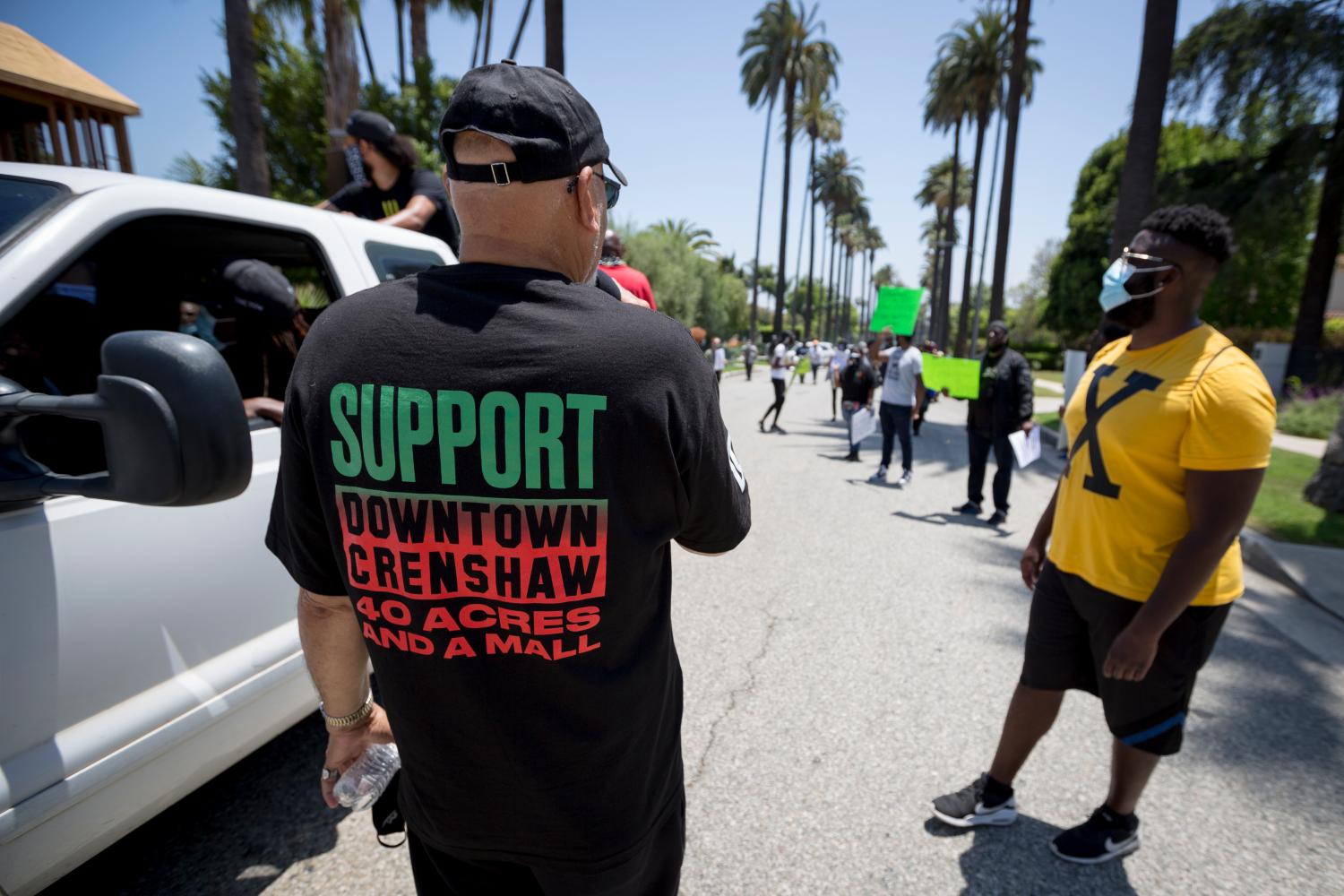
Community ownership can break the cycle of displacement
Community ownership is a tool that can reset the board by creating development without displacement. The term refers to an array of models and initiatives—including land trusts, co-ops, and community investment trusts—that allow like-minded residents to create a defined “community” (of varying geographic size) as a legal entity able to purchase property to be used according to agreed-upon purposes that benefit the community.
As Brookings presented in a recent research brief, community ownership has many economic, social, and civic benefits. In addition to preventing renters from being priced out—either through tightly concentrated development or fire sales of real estate—community ownership provides decisionmaking power to people who are often otherwise shut out of political processes and development initiatives. By giving residents a stake in their community’s future, protected by law, community ownership models encourage active citizenship.
There are many different community ownership models that serve a variety of social purposes. Some neighborhoods use community ownership to preserve affordable rental housing or commercial space, while others use it as a vehicle for investment, jobs, or economic revitalization. Typically, community ownership involves the creation of an entity whose governing board is made up of local residents as well as local business and civic leaders. (See our primer to learn more about the details.)
For Downtown Crenshaw, community ownership offers a chance to preserve affordable housing, support entrepreneurs, create jobs and job training programs, and ensure that residents have access to retail (including locally grown food), office space, and more. Through leveraging these assets combined with a community stabilization fund, the group also wants to expand worker-owned co-ops and create public spaces, including a central park, entertainment district, senior center, and day care—all owned by the community itself. “We will own the change,” Downtown Crenshaw states on their website. “And our neighbors will be here to enjoy it.”
Supporting community ownership in the long term
The fate of the Baldwin Hills Crenshaw Plaza will likely be decided in the next two days. If the grassroots organizing is successful, it will be because community members were empowered to fight for control of their assets through community ownership. But regardless of the outcome, it is clear that community ownership models are essential to prevent displacement and preserve Black economic power at the local level. To provide broader support to these efforts, communities need public institutions and investments in public spaces—not just private investment, particularly when driven by wealthy investors or philanthropists who often have their own agendas.
Communities also need the financing opportunities made possible by federal spending, as allocated by state and local elected officials, with particular attention to places that have experienced distress from the pandemic.
A century and a half after Black freedom was first proclaimed, Black people are still seeking places where they can reap the fruit of their labor, safe from those who would seek to deny them that right. The fight for community ownership in Crenshaw is the most recent step in this journey, but it won’t be the last.
Cover photo credit: Downtown Crenshaw Rising.

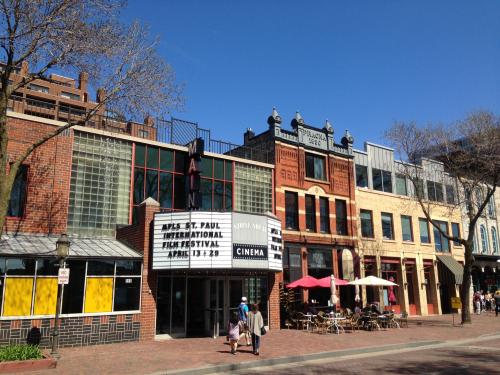
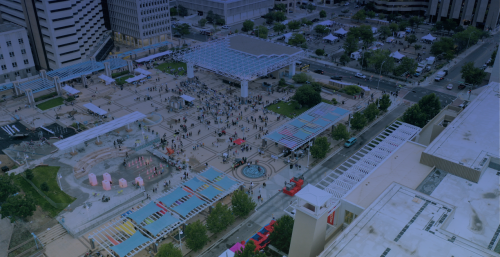
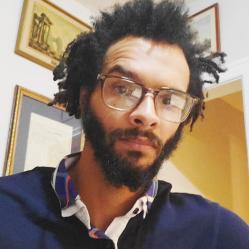
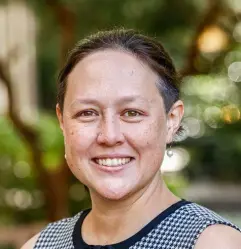
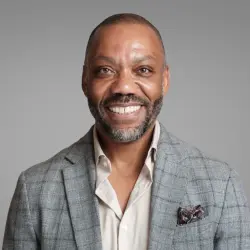

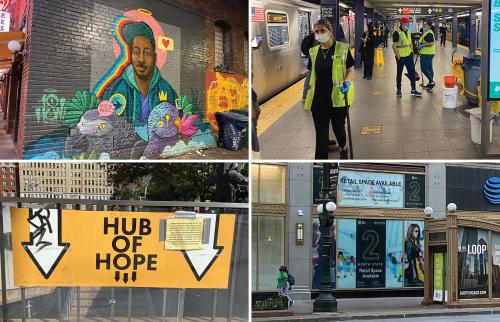
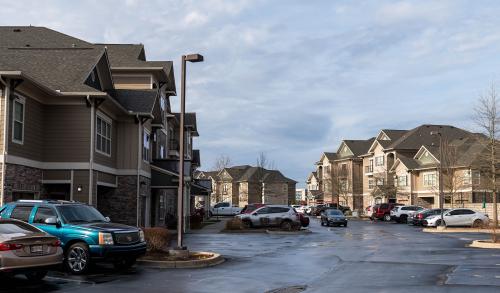
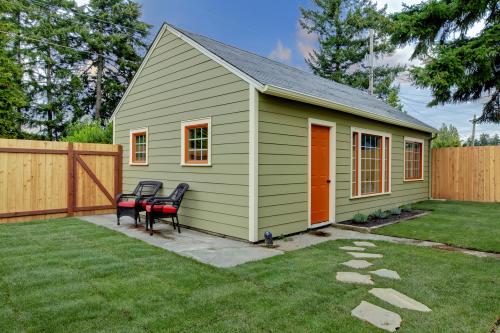
Commentary
‘40 acres and a mall’: How community ownership models can preserve economic power in Black neighborhoods
July 29, 2021